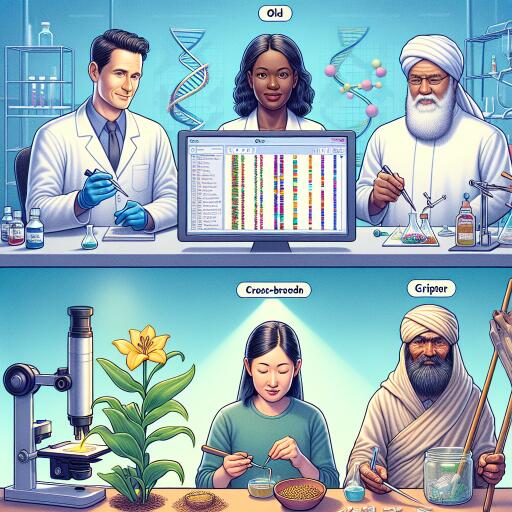Exploring the World of Gene Editing: A New Frontier Beyond Traditional GM and Conventional Breeding
In the ever-evolving field of genetics, gene editing stands out as a groundbreaking advancement that promises to reshape our understanding of biological modification and its potential applications. Spearheaded by experts like Prof Michael Antoniou and Claire Robinson, our journey into the nuances of gene editing reveals a world of complexity and precision unmatched by older genetic modification (GM) methods and conventional breeding.
At its core, gene editing involves the deliberate manipulation of an organism’s DNA. This process typically starts with the induction of a double-strand break at specific locations within the genome. What distinguishes gene editing from previous methods is its ability to target these modifications with remarkable precision, a stark contrast to the semi-random insertions characteristic of older GM techniques.
Despite its targeted approach, the aftermath of this DNA break—and the cell’s subsequent repair efforts—is where the notion of precision begins to blur. The repair mechanism, although a natural response, is inherently imprecise. This imprecision can either be a boon or a bane, depending on the objective of the gene editing experiment. On one hand, it allows for the inactivation of specific genes, a process leveraged to study gene function or to induce desirable traits. On the other hand, it can give rise to a slew of unintended mutations, both at the targeted site (on-target mutations) and elsewhere in the genome (off-target mutations), potentially leading to extensive genetic disruptions.
The challenges of gene editing extend into the realm of plant modification, where the intricate process can induce widespread genetic mutations beyond the intended edits. These mutations, resultant from the combined processes of gene editing, tissue culture, and cell transformation, vastly differ in scale and nature from the genetic diversity produced through natural breeding cycles. This distinction raises significant concerns regarding the safety and ecological impact of gene-edited organisms, particularly in agricultural applications.
Contrary to popular belief, gene editing does not sidestep the issue of foreign DNA integration. Research has consistently shown that gene editing tools can inadvertently introduce foreign genetic material into the host genome, a reality that complicates claims of its equivalence to traditional breeding practices.
Framing the debate around gene editing are arguments that compare its outcomes to naturally occurring genetic modifications. However, the analogy fails to account for the evolutionary timescale and selective pressures that temper natural genetic alterations, a luxury not afforded to the rapid, widespread cultivation of gene-edited crops.
In response to these challenges, experts like Dr. Yves Bertheau emphasize the necessity of rigorous regulatory frameworks to assess the safety and environmental impact of gene-edited organisms on a case-by-case basis. The call for meticulous oversight contradicts the growing pressure for deregulation, which advocates for the removal of safety checks and labelling requirements under the guise of gene editing’s purported precision.
As we navigate the intricate landscape of gene editing, it becomes increasingly clear that metaphors of precision, such as those likening CRISPR to a meticulous editor, fail to capture the chaotic underpinnings of the process. The reality, as illustrated by scholars like Eben Kirksey, is more akin to a fraught landscape where each intervention carries the risk of unforeseen consequences. In this context, CRISPR emerges not as a scalpel that deftly alters life’s blueprint but as a catalyst for mutation—a powerful yet unpredictable force that reshapes genomes with lasting implications.
As we stand on the brink of a new era in genetic science, the journey into gene editing offers both profound opportunities and sobering challenges. The technology’s potential to revolutionize medicine, agriculture, and biodiversity conservation is undeniable. Yet, the path forward demands a careful consideration of ethical, safety, and environmental concerns. In the nexus of innovation and responsibility, gene editing presents a compelling narrative of scientific exploration, one that will undoubtedly shape the future of genetic research and its application in the years to come.
Conclusions and Recommendations: The realm of gene editing, while promising, is fraught with complexities that defy the simplistic narratives of precision and safety. As we advance in our understanding and application of this technology, it is paramount that we uphold rigorous standards of research, ethical consideration, and regulatory oversight. Only by embracing a holistic approach can we ensure that gene editing serves the greater good, benefiting humanity while safeguarding our ecological and genetic heritage.










